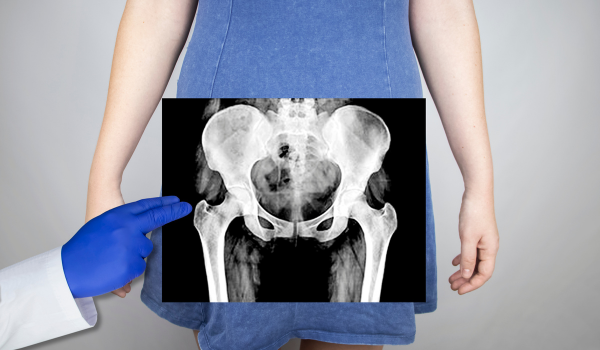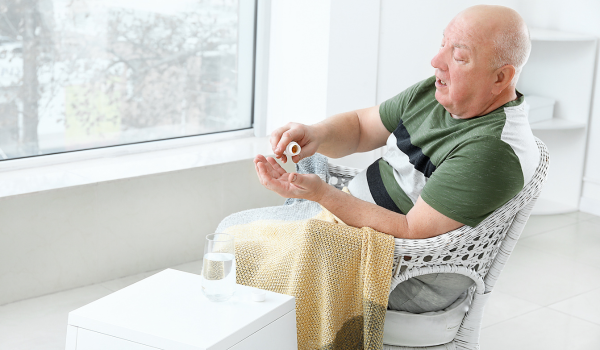.png)
Understanding the Condition
May-Thurner Syndrome (MTS) is a vascular disorder caused by the compression of the left iliac vein by the right iliac artery, leading to reduced blood flow from the left leg back to the heart. While some people may not experience symptoms, others face daily challenges like swelling, leg pain, or even deep vein thrombosis (DVT).
Living with MTS is not just about undergoing a procedure or taking medications—it's also about adjusting your lifestyle to reduce symptoms, prevent complications, and maintain long-term vein health.
Monitoring Symptoms
Regular monitoring is a crucial part of living with MTS. Patients should become familiar with the early signs of complications, such as:
-
Unilateral leg swelling, especially in the left leg
-
A sensation of heaviness or aching after prolonged standing
-
Skin color changes or visible veins in the lower limb
-
Sharp or persistent pain in the calf or thigh
Keeping a symptom diary and noting patterns related to activity, travel, or menstruation (in women) can help detect problems early and improve clinical care.
Routine Medical Follow-Up
Long-term management of MTS requires consistent follow-up care. Depending on your treatment history, this might include:
-
Vascular ultrasounds to assess blood flow and stent patency
-
Blood tests to monitor clotting factors if on anticoagulants
-
Check-ins with vascular specialists to adjust medications or review imaging
-
Physical exams to evaluate for skin changes, ulcers, or varicose veins
Even if you feel well, silent complications can arise, so routine appointments are essential.
Medication Adherence
Many patients with MTS—especially those with a history of DVT—are prescribed anticoagulants. These medications reduce the risk of clot recurrence but require careful adherence:
-
Take medication at the same time daily
-
Avoid missing doses or doubling up after forgetting
-
Report any unusual bruising or bleeding
-
Keep track of any interactions with new medications
If you’re on warfarin, INR levels must be monitored regularly. Direct oral anticoagulants (DOACs) typically require fewer checks but still need physician oversight.
Compression Therapy
Compression stockings can dramatically reduce symptoms like swelling, discomfort, and fatigue. They support vein function and help maintain consistent blood flow in the lower extremities.
To use them effectively:
-
Wear them daily, especially during long standing or travel
-
Replace them every 3–6 months or when they lose elasticity
-
Ensure a proper fit for comfort and effectiveness
-
Discuss with your provider whether you need thigh-high or knee-high styles
Compression therapy is often one of the most cost-effective and low-risk tools for MTS symptom management.
Movement and Exercise
Staying active is essential. Physical activity supports circulation and helps reduce the chance of clot formation. However, exercise should be tailored to your condition:
-
Prioritize low-impact options like walking, swimming, or cycling
-
Avoid high-impact or heavy weightlifting without medical clearance
-
Stretch regularly to promote blood flow and prevent stiffness
-
Take breaks during sedentary activities to walk or stretch every hour
A physical therapist may design a vascular-safe workout routine if you have a history of DVT or reduced mobility.
Travel Safety Tips
Long trips can increase the risk of clot formation due to prolonged immobility. When traveling:
-
Wear compression stockings on flights or car rides over 2 hours
-
Get up and move every 1–2 hours
-
Stay hydrated but limit caffeine and alcohol
-
Flex your ankles and calves periodically while seated
Travel doesn’t have to be off-limits, but preparation is key.
Healthy Weight Management
Excess body weight puts added pressure on the pelvic veins, worsening MTS symptoms. Healthy weight management through balanced nutrition and activity can ease compression and enhance recovery.
Tips include:
-
Focus on whole foods rich in fiber, lean proteins, and healthy fats
-
Reduce sodium to limit water retention and leg swelling
-
Avoid processed foods and added sugars
-
Maintain a calorie balance based on your age, activity level, and goals
Work with a dietitian if you need help creating a vascular-friendly meal plan.
Post-Procedure Care
If you’ve had a stent or other endovascular intervention for MTS, long-term care is crucial. Post-procedure recommendations include:
-
Continue anticoagulation as directed
-
Avoid heavy lifting for several weeks
-
Monitor for any leg pain, new swelling, or shortness of breath
-
Attend all scheduled imaging studies to confirm stent function
Most people recover well and return to regular activities, but attention to follow-up ensures long-term success.
Pregnancy Considerations
Women with MTS who are pregnant or planning to conceive need tailored care. Hormonal and anatomical changes during pregnancy can worsen symptoms or increase clot risk.
Management includes:
-
Switching to pregnancy-safe anticoagulants like low-molecular-weight heparin
-
Wearing compression stockings throughout pregnancy
-
Monitoring for leg symptoms during each trimester
-
Planning with a high-risk obstetrics team familiar with MTS
Postpartum care is equally important, as clotting risk remains high in the weeks following delivery.
Menstrual and Hormonal Effects
Some women with MTS notice symptom flare-ups during menstruation due to hormonal shifts affecting blood vessels. To manage this:
-
Track menstrual cycles and symptom patterns
-
Stay hydrated and physically active during high-symptom days
-
Avoid hormonal birth control unless cleared by your physician
If hormonal treatments are necessary, non-estrogen options may be safer for those with clot risk.
Foot and Skin Care
Because MTS may cause chronic swelling or CVI, proper foot and skin care is essential:
-
Moisturize daily to prevent dryness and cracking
-
Treat cuts or scrapes immediately to avoid infection
-
Avoid tight footwear or socks that constrict circulation
-
Elevate your legs whenever possible
See a dermatologist or wound care specialist if you develop ulcers, rashes, or persistent irritation.
Psychological Well-Being
Chronic conditions like MTS can take a toll on mental health, especially if symptoms limit activity, work, or social life. Emotional support is just as important as physical care.
Ways to cope include:
-
Talking with a therapist or counselor
-
Joining online or local support groups
-
Practicing stress-reduction techniques like yoga or meditation
-
Setting realistic goals and celebrating small wins
Don’t hesitate to seek help—managing stress can improve both mood and symptom control.
Work and Daily Function
MTS can interfere with occupational responsibilities, particularly if the job requires standing, sitting, or lifting for long periods. Workplace accommodations may include:
-
Ergonomic seating or sit-stand desks
-
Scheduled leg movement breaks
-
Compression wear during shifts
-
Modified duties for physical tasks
Clear communication with your employer and healthcare provider ensures a smoother transition to a manageable work setup.
Sleep Positioning
Leg elevation at night can assist with blood return and reduce swelling. Ideal sleep tips include:
-
Using a wedge pillow or stacking cushions under your legs
-
Sleeping on your back to avoid pelvic compression
-
Avoiding sleeping on your left side if symptoms are worse on that side
Experiment to find a comfortable and effective setup that aligns with your specific symptoms.
Preventing Recurrence
For those who’ve experienced MTS-related DVT or symptoms in the past, recurrence prevention is critical. Key strategies include:
-
Ongoing anticoagulation if advised
-
Staying mobile during daily routines and travel
-
Addressing any hormonal or clotting risk factors
-
Following through on all imaging and medical appointments
Even after stenting or intervention, the underlying anatomical setup remains, so vigilance is essential.
When to Seek Help
Immediate medical attention is needed if you experience:
-
Sudden leg swelling or pain
-
Shortness of breath or chest pain
-
Skin discoloration or sores that won’t heal
-
Bleeding while on anticoagulants
Better safe than sorry—early care often prevents more serious complications.
Conclusion
Living with May-Thurner Syndrome requires daily awareness, ongoing medical care, and personalized lifestyle changes. Fortunately, most people with MTS can lead full, active lives when they follow a comprehensive management plan.
From compression therapy and physical activity to stress management and regular monitoring, every aspect of long-term care matters. With the right tools and support, MTS doesn’t have to hold you back.

.png)
.png)
.png)
.png)
.png)
.png)
.png)
.png)



